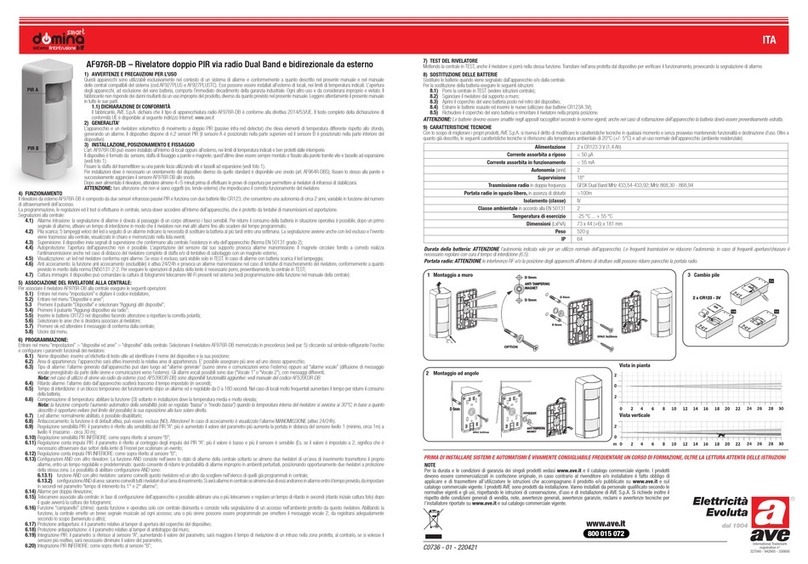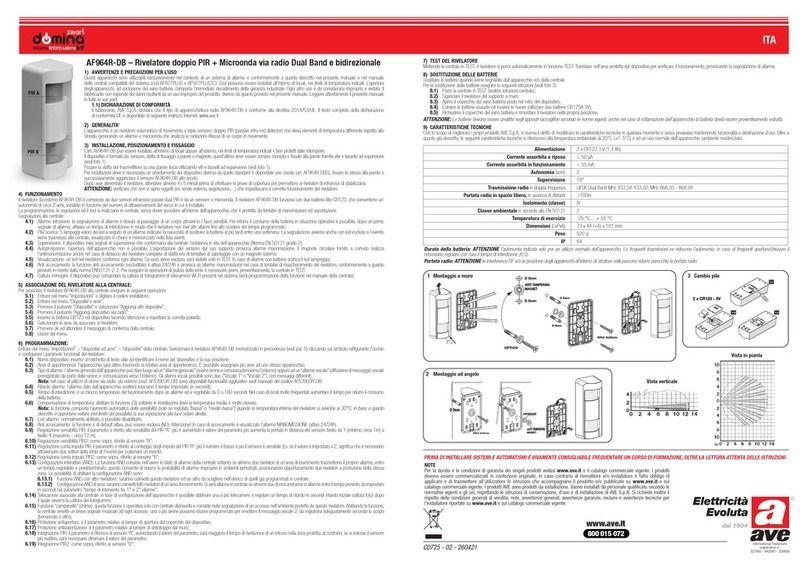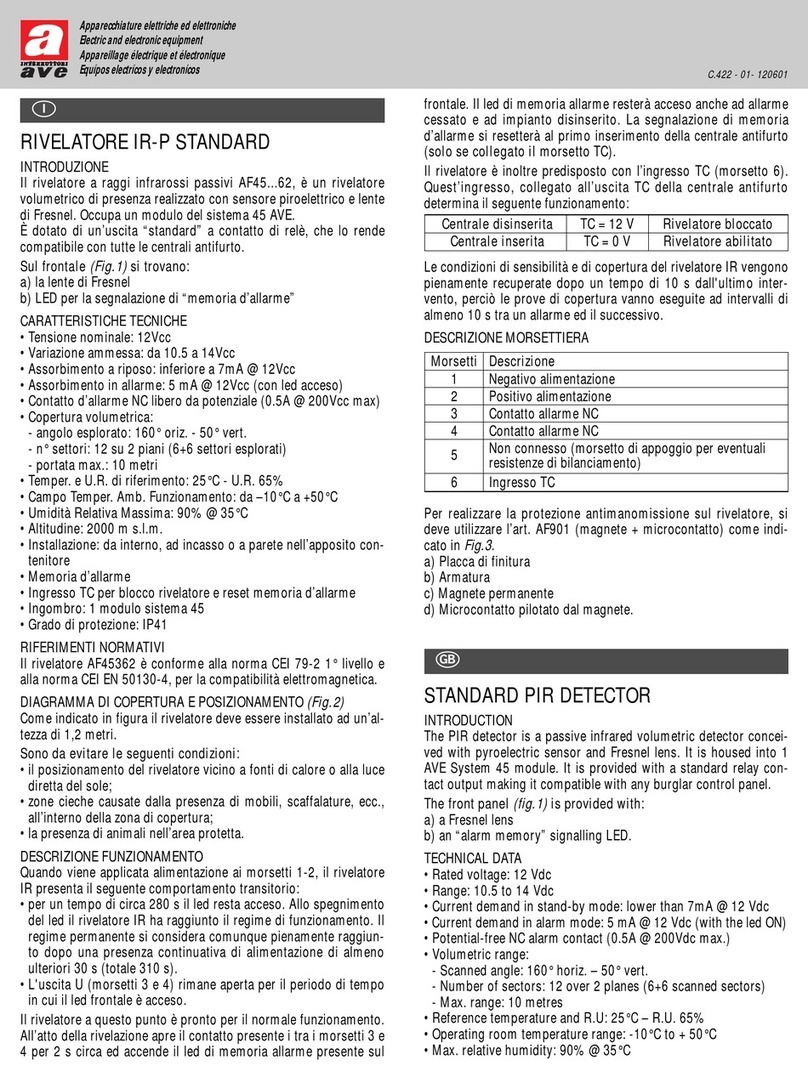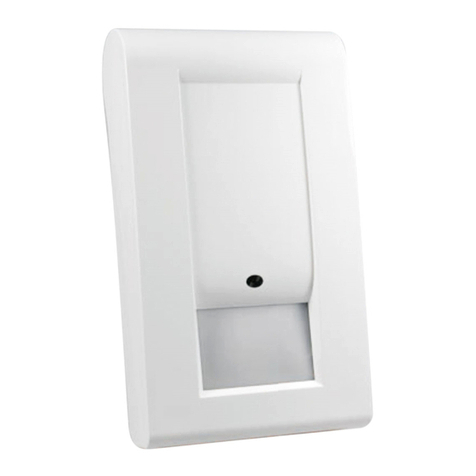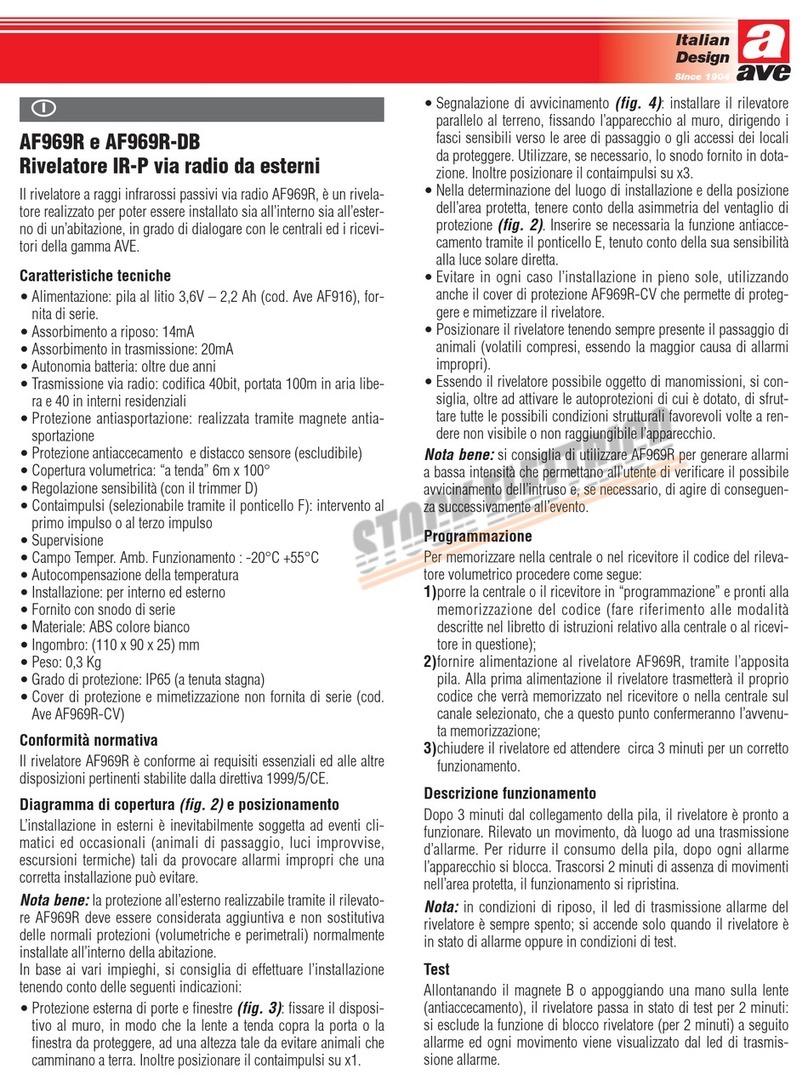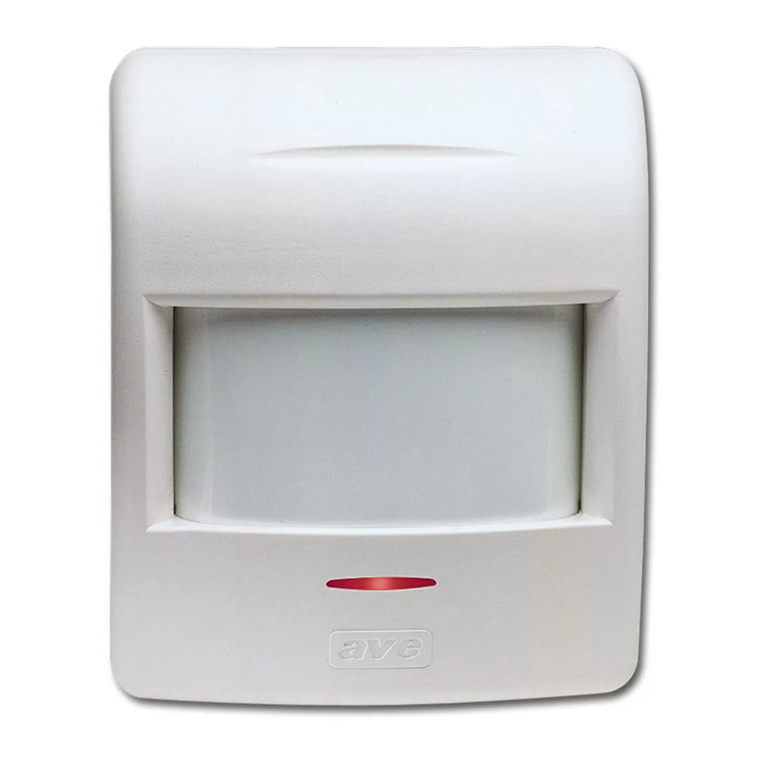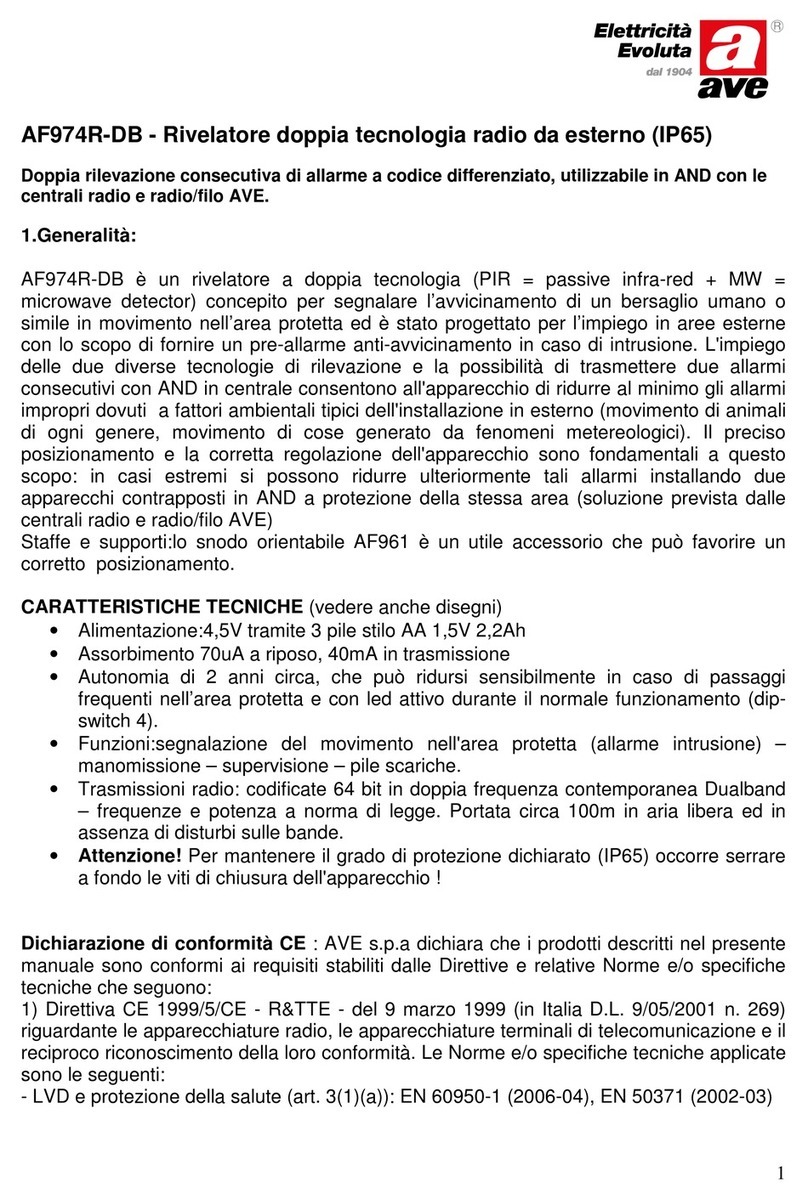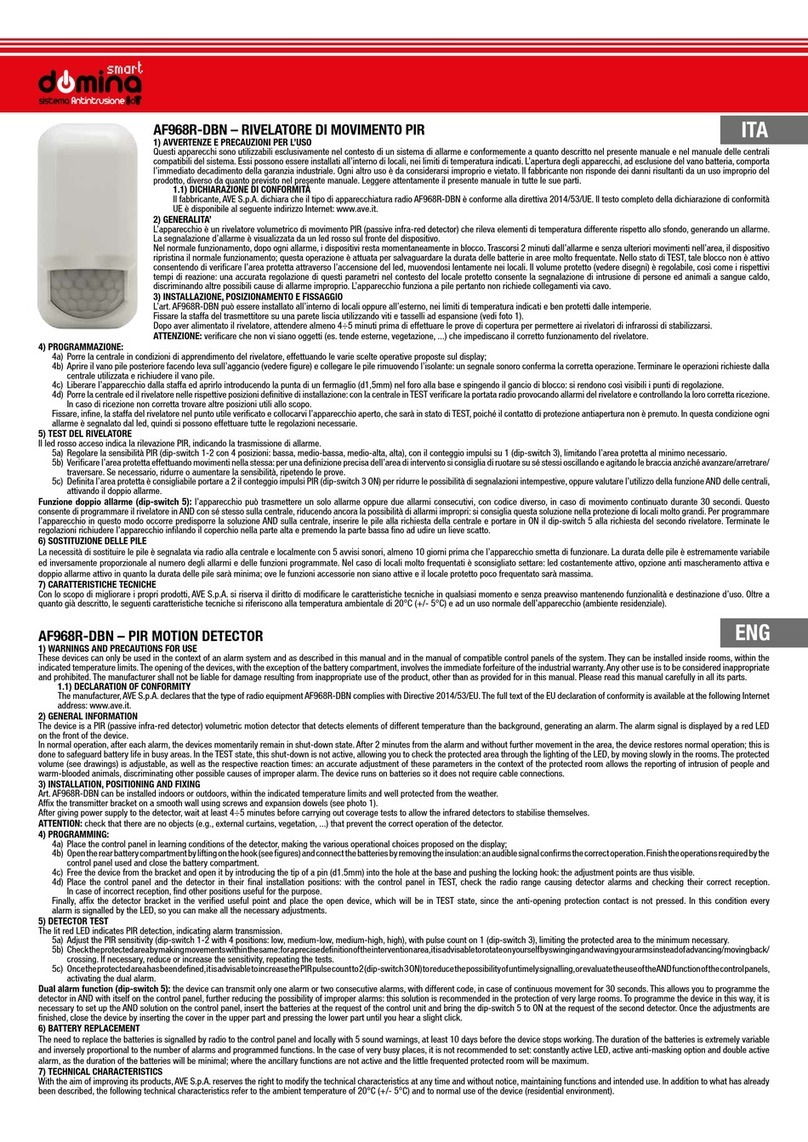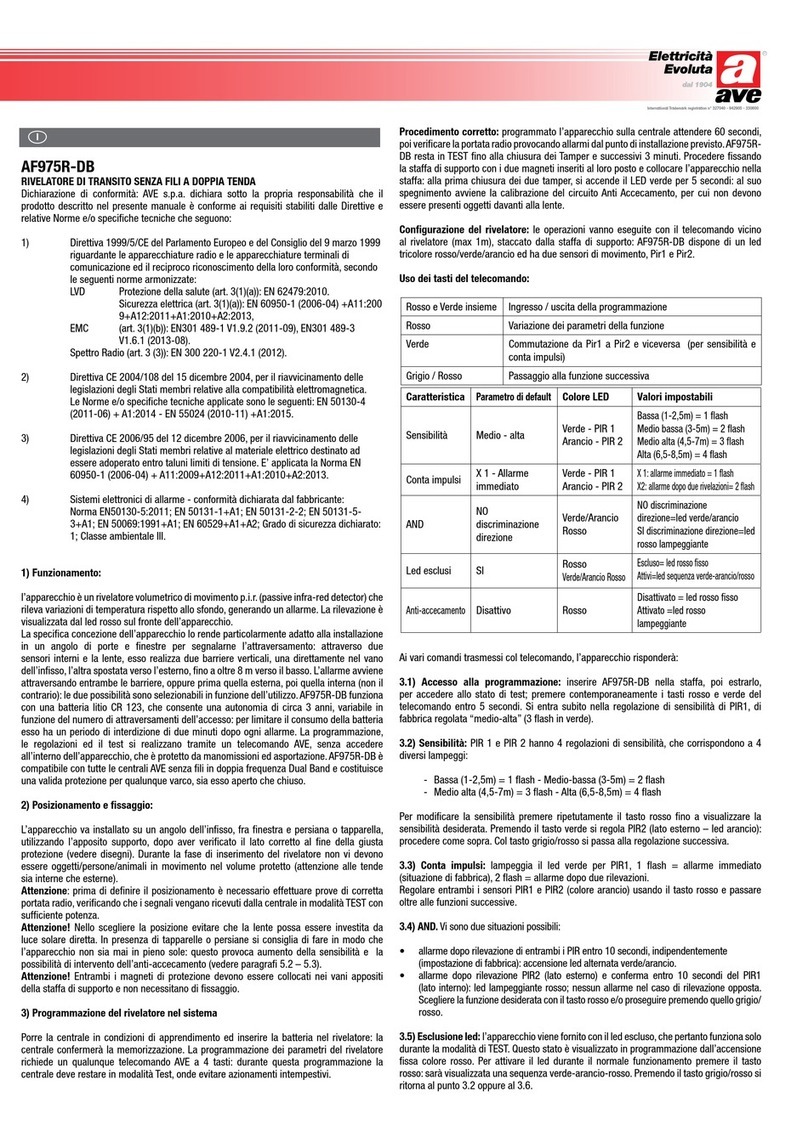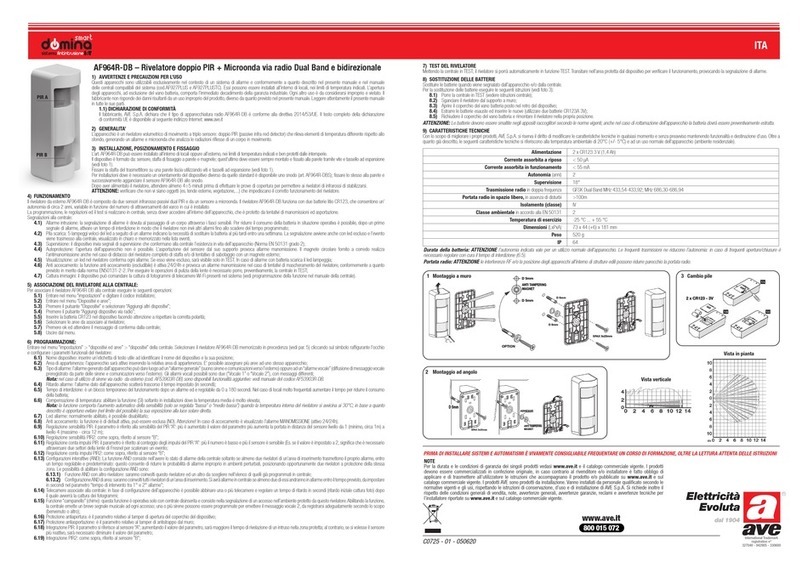AF970R
Barriera a raggi infrarossi via radio
AF970R Laserbeam è una barriera a raggi infrarossi per la prote-
zione di porte e finestre con trasmissione dell’allarme via radio che
dialoga con tutte le centrali della gamma radio AVE.
Come indicato in fig.1, è composta da due elementi (master e
slave) alloggiati in due profilati di materiale plastico, alimentati da
batterie al litio che generano tra loro una barriera di due raggi
infrarossi invisibili e modulati, interrompendo uno dei quali si ha
la trasmissione d’allarme via radio.
Caratteristiche tecniche
• Alimentazione: n.° 2 pile al litio 3,6V-2,2 Ah (cod. AVE AF916).
Fornite di serie
• assorbimento: 200µA per ogni barra
• autonomia: oltre 1 anno
• portata (distanza massima tra le barre): 5 m
• segnali trasmessi: allarme (interruzione raggio), fine allarme
(ripristino raggio), tamper, pila scarica, supervisione
• portata radio: 100m in campo libero e con totale assenza di
disturbi di fondo sulla banda
• tempo minimo di intervento 0,2 s
• grado di protezione: IP64
• peso: 0,7 Kg la coppia
• n.° 2 raggi di rilevazione.
Conformità normativa
La barriera AF970R è conforme ai requisiti essenziali ed alle altre
disposizioni pertinenti stabilite dalla direttiva 1999/5/CE.
Posizionamento (fig.1)
AF970R può essere installata a protezione di accessi sia in interni
che in esterni ed è la soluzione ideale per la protezione di porte,
finestre e varchi in genere, nel settore residenziale. Grazie all’ali-
mentazione tramite batteria al litio e alla trasmissione dell’allarme
via radio, non è necessario alcun cavo per l’installazione.
Nota bene: in esterni occorre evitare che la luce del sole possa
colpire direttamente uno dei ricevitori al fine di evitare una perdita
anche drastica della portata; si consiglia inoltre di aumentare, in
esterni, l’immunità alla luce solare diretta attraverso il dip-switch
n°3 (fig. 3).
Più barriere possono essere sovrapposte, attraverso il tappo di
giunzione fornito, al fine di ottenere più raggi.
Nota bene: nel caso di installazione di più barriere sovrapposte,
occorre predisporre i dip-switch n°1 e 2 in posizione diverse per
ciascuna barriera (cioè singola coppia Master e Slave), come indi-
cato in figura 5.
Predisposizione dip-switch (fig.3)
Il circuito master e quello slave di ciascuna barriera devono avere i
dip-switch impostati allo stesso modo.
Impostazioni dip-switch (fig.3):
1 e2= impostazione ritardo di trasmissione dell’allarme (espresso
in secondi)
3= regolazione funzionamento in interno o in esterno
4= abilitazione funzione fine allarme.
Nota bene: tutti i settaggi dei dip-switch vanno fatti prima di
inserire le pile.
Installazione e programmazione
Per installare ed memorizzare nella centrale o nel ricevitore il codi-
ce della barriera AF970R, procedere come segue:
1) sfilare i tappi ed estrarre con attenzione e delicatezza i circuiti
elettronici Master e Slave
2) impostare i dip-switch del Master e dello Slave secondo l’im-
piego previsto
3) porre la centrale o il ricevitore in “programmazione” e pronti
alla memorizzazione del codice (fare riferimento alle modalità
descritte nel libretto di istruzioni relativo alla centrale o al rice-
vitore in questione)
4) fornire alimentazione al circuito Master della barriera AF970R
tramite l’apposita pila (e quindi alimentare anche il circuito
Slave con l’altra pila fornita). Alla prima alimentazione il circui-
to Master trasmetterà il proprio codice che verrà memorizzato
nel ricevitore o nella centrale sul canale selezionato, che a
questo punto confermeranno l’avvenuta memorizzazione
5) abilitare il test di allineamento inserendo il ponticello TEST su
entrambi i circuiti della barriera (fig.2)
6) infilare i circuiti nelle barre ponendo attenzione al verso (evi-
denziato sulle etichette poste sul retro dei due profilati di mate-
riale plastico) e rimettere i tappi
7) posizionare le barre nel luogo di installazione, effettuando
delle prove funzionali: l’allineamento è automatico - l’interru-
zione di un raggio provoca un BEEP del buzzer interno alla
barra Master
8) identificata la posizione precisa delle barre, segnare i punti di
fissaggio a parete e la posizione del magnete del dispositivo
antimanomissione, se utilizzato (fig.1)
9) riaprire le barre, togliere i ponticelli TEST (fig.2), chiudere (se
necessario) il ponticello TAMPER e richiudere le barre con i
circuiti correttamente posizionati all’interno (al punto di tra-
smissione TX del Master deve corrispondere in linea d’aria il
punto di ricezione RX dello Slave, (fig.1)
10)fare i fori di fissaggio e quello del magnete di TAMPER (se
necessario) e procedere al fissaggio con tasselli.
Nota bene: se uno ostacolo interrompe un raggio per più di 30
secondi il sincronismo si ristabilisce dopo 1 minuto circa dalla
rimozione dell’ostacolo stesso.
Hi-Tech
Electric Solution
